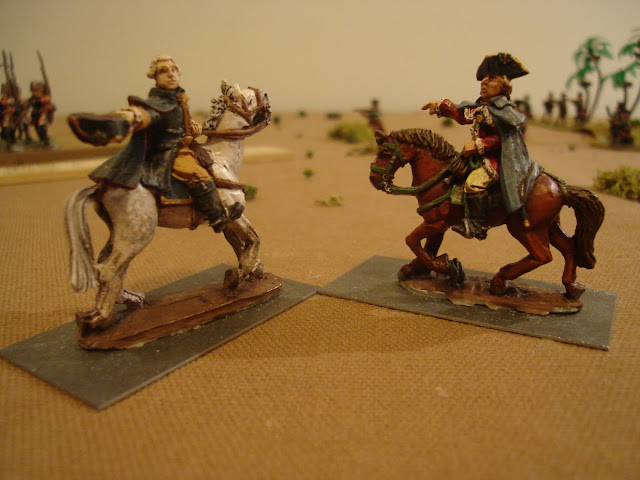
Well, that's a good question, your eminence!
This blog has the dubious honor of "least posted to" as I've been just banging away with Medievals and WWII. Lots of inspiration for game design with some great support from others has really got the "fast-play with flavor" design concepts working well, here. Also, there's been lots of indecision on my part re: what to do and how to do it.
Suffice it to say that I flirted with a switch to WSS because the units are cool looking and it is pretty exotic, a lesser known period. I got some Wargames Factory 28mm plastics, and they look really interesting to work with. Then I started puttering around with formations and table space, and I just didn't like the way the 25mm looked for a mass battle sort of game. It was also something of a struggle to differentiate between the English / Dutch firing line and the French style firing line. Looks matter, so I sort of lost momentum thinking I should switch to 10mm or even 6mm.
Then, I thought that I'd ditch much of the tricorne era stuff, as there are plenty of others around here who play it. Also had trouble deciding if I should do French and Indian War or AmRev. It's a bit silly, since I live in the middle of a major theater of war for the American Revolution, but there it is...a clash between the exotic and the known.
Anyway, playing around with my 25mm Old Glory medievals has given me more feel for how they will look and play on the table. They are OK in the small space on which I do much of my wargaming. As my fast-play medieval game [click] is a "big skirmish" [or perhaps "Unit Skirmish" game would be a better term] it does somehow feel right.
So overall, I am thinking that games where a Unit is a few companies, say 100-150 men, work well in fast play and on my table. I think that a full regiment for fast-play needs smaller figs to keep the small frontage that makes the Units themselves _physically_ easy to handle.
Game Design Note: let's remember that effective shooting distance is typically about half the size of a regiment in the horse and musket era, if we use the 7YW as a sort of median.
Anyway, this brings me back to the Tricorne Era, and American Revolution.
Been going back and forth about what to do with the last of my 25mm Old Glory AWI. I've about a hundred, all nicely painted, all Hessians, including:
30 Musketeers w' command
30 Fusiliers w' command
19 Jaegers w' command
6 Gunners
5 guns
2 generals
and left over somehow: a regiment of 24 7YW French w' command.
That's it. The big old mound of lead was successfully sold off.
Now, I do love AWI, and I live near a battlefield and in an area full of AWI history.
For a while, I was going to redo a part of it in 40mm.
I love the figs - they're bigger and easier to paint in my old age. But I haven't gotten my ECW stuff painted so I'm uncertain about if I'd really prefer them in 40mm. Also, the units may be a bit snug on my small office table where I do much of my gaming - it's only 4x3' and units of 16-32 figs take up about 5-10" frontage each.
Then I thought about doing it in 6mm, but I'm uncertain I like that size fig.
I've some 6mm ACW that need to be finished, and after pushing them around a bit I'll know if I like figures that small and will buy into the "big picture look" of a 6mm unit. The ACW units will be brigades of about 6 bases of 16 figs each, or 96 figures.
Then I stumbled onto Pendraken 10mm AWI.
They are just lovely, and cost nothing and look like they'd be easy to paint. They'd be great for a small table and One-Hour Wargames type activities. However, they are a bit small to have individual character and do narrative gaming with them. I think in 10mm I'd rather do a "mass battle European war" type of thing like WSS.
Then there is 15mm - but my old club has a mound of 15mm AWI. I've a couple of local guys who have 15mm, so the stuff would mesh with theirs. But I dunno - it's not expensive but it is almost like it has the disadvantages of 25mm details to paint, but on a smaller surface. I'd rather do 25mm and have more space on which to paint.
Then there's 25mm, which is the scale in which I started my AWI.
It has a good balance of individuality of figs and "mass effect" of figs. You can play a skirmish game or you can have a table full of massed units. Note this is 25mm, as in Old Glory 25mm, not the new British 28mm stuff. It is not expensive - with the OG Army discount, it is around 72 cents a figure, or 1/3 the price of either 40mm or premium Fife and Drum 28mm stuff, which is in the $2-2.25 a fig range. I also like the Old Glory balance of animation and paintability, with the exaggerated hands and faces - just makes them look better on the table at game distance.
As I've been playing with my Old Glory medievals, which are based in groups of 5-15 figs, I think they provide a nice size to table space ratio for me. This has reinvigorated my interest in my painted 25mm Old Glory Hessians. So here they are in all their [Old] Glory:
Below. View of the battlefield, a little-known invasion of South Carolina by Hessian Forces [note the palm trees in the scrub at the top]. Musketeers [30] to top right, two 6pdr guns w'crew, 19 Jaegers scattered around in front, to left, and holding the terrain at top.

Close up of Jaeger's skirmishing, skillfully using every shrub and bush.

Hurried conference between the Oberjaegerfuhrer, his leutnant and the musician as to the deployment of the additional jaegers dashing into the battle.

Meanwhile, the Musketeers try to decide which formation looks better...

Two groups of two divisions? Left divisions with British advisor holding field conference

right divisions moving up

...or one big battalion of all four divisions? Looks really matter, this is Lace Wars, after all!

And on to the artillery. These came out very well, IMHO. 6pdr guns look small but not tiny.

The concept was three gunners per gun if 6pdr, 2 gunners per gun if 3pdrs [which I have]. The Hessians apparently often pulled around their own 3pdrs as battalion guns.

Speaking of looking good, here's the second 30-fig Unit, Fusiliers.

In original concept, this would be all 30 in three ranks, as the Hessians fought closer and deeper than their British and Rebellious Subjects - it's about a 6" frontage.

Looks a bit crammed, however.
In my next concept, the "third rank" would be implied by putting the drummers, colonel, and some pushy sergeants in a third partial rank. This would be differentiated from the wider, narrower British and Americans by putting them in a wider, 2-rank formation - it's 1" wider.

And this is assuming 4 divisions of 2" each, a good size for basing these figs - now 8" wide.

And the two generals I painted up. I _believe_ the right is supposed to be Benedict Arnold, and of course the fellow on the left needs no introduction.

Still pleased with how Gen. Washington's horse came out - the dappling is nice!
Well, there you have it. A lot of thinking going on here...
The 25mm seem to have the best balance of size as individuals and are yet small enough to give a "mass" effect when in groups. They are also pretty easy to see on the table from gaming distance. As I truly like the Old Glory style [not everyone does] I'm in pretty good shape financially. I priced out the American side of a Trenton Christmas Surprise project at needing around another $150 or so of figures. Not really that bad. Of course I need the entire American force, and then Grenadiers for the Hessians.
Also, I could go another direction and fight Blue Prussians v. White-coat French in a sort of semi-imagination / 7 Years War sort of battles. All I'd need to do is add some heavy cavalry for each side as I was already planning a couple units of light dragoons for these armies.
I'll have plenty more time to think about it - I'll be working with a lot of 25mm figs for the next few months, preparing for a big-battle Brunanburh which will be covered in my ancients thru medieval blog, Spear to the Strife [click].
Well, if you've any thoughts on this, I do welcome them!





























